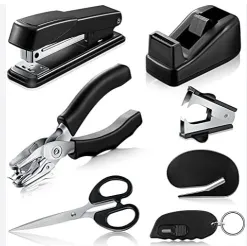In the world of woodworking, achieving a smooth, flawless finish is paramount. Whether you're a seasoned professional or a DIY enthusiast, having the right tools can make all the difference. One such tool that plays a crucial role in achieving that perfect finish is the finishing sander. In this comprehensive guide, we'll delve into everything you need to know about buying a finishing sander, from its benefits and types to essential factors to consider before making a purchase.
Benefits of Using a Finishing Sander
Smooth Finish for Wood Surfaces
One of the primary benefits of using a finishing sander is its ability to deliver a smooth, blemish-free surface. Unlike hand sanding, which can be time-consuming and inconsistent, a finishing sander ensures uniformity, making it ideal for achieving professional-quality results.
Time Efficiency
With a finishing sander, you can significantly reduce the time and effort required to sand large surface areas. Its efficient sanding motion allows you to cover more ground quickly, enabling you to complete projects in a fraction of the time compared to traditional methods.
Versatility
Finishing sanders come in various types, each designed for specific applications. Whether you're sanding curved edges, tight spaces, or flat surfaces, there's a finishing sander to suit your needs. From orbital sanders to detail sanders, the versatility offered by these tools makes them indispensable in any woodworking arsenal.
Types of Finishing Sanders
Orbital Sanders
Orbital sanders are known for their circular sanding motion, which helps prevent swirl marks and provides a smooth finish. They are versatile and suitable for various tasks, making them a popular choice among woodworkers.
Random Orbit Sanders
Random orbit sanders combine orbital and rotary motions to deliver fast, efficient sanding with minimal risk of swirl marks. Their random sanding pattern ensures uniformity and is particularly effective for removing material quickly.
Belt Sanders
Belt sanders are powerful tools designed for rapid stock removal and rough sanding. They feature a continuous loop of sandpaper that rotates around two drums, making them ideal for flattening surfaces and smoothing rough lumber.
Detail Sanders
Detail sanders, also known as mouse sanders, are compact, lightweight tools designed for intricate sanding tasks. Their triangular sanding pads allow them to access tight corners and hard-to-reach areas with ease, making them perfect for detailed work.
Factors to Consider Before Buying
Power
When choosing a finishing sander, consider its power output, which determines its sanding efficiency. Opt for a model with sufficient power to tackle your projects without bogging down or overheating.
Size and Weight
The size and weight of a finishing sander can impact its maneuverability and ease of use. Choose a model that feels comfortable in your hand and allows you to work for extended periods without fatigue.
Dust Collection
Effective dust collection is essential for maintaining a clean and healthy work environment. Look for sanders with built-in dust collection systems or compatibility with external dust extraction devices to minimize airborne particles and debris.
Ergonomics
Ergonomic design features such as comfortable grips and vibration reduction can enhance user comfort and reduce fatigue during prolonged use. Prioritize sanders that prioritize ergonomics to ensure a more enjoyable and productive woodworking experience.
Top Brands in the Market
When it comes to purchasing a finishing sander, choosing a reputable brand can ensure quality, performance, and reliability. Some of the top brands in the market include DEWALT, Makita, Bosch, INGCO, and Total Tool known for their innovative designs and durable construction.
How to Choose the Right Finishing Sander
Assessing Project Needs
Before selecting a finishing sander, assess the specific requirements of your projects, including the type of material, surface area, and desired finish. This will help you determine the most suitable sander for your needs.
Power Source Consideration
Finishing sanders are available in corded and cordless models, each offering its advantages. Corded sanders provide consistent power but require access to a power outlet, while cordless sanders offer portability but may have limited run time.
Ergonomic Design
When shopping for a finishing sander, prioritize models with ergonomic features such as comfortable grips and minimal vibration. These design elements can significantly enhance user comfort and reduce fatigue during prolonged sanding sessions.
Tips for Using a Finishing Sander
Start with Coarse Grit Sandpaper
Begin sanding with a coarse grit sandpaper to remove imperfections and rough surfaces efficiently. Gradually progress to finer grits for a smoother finish, ensuring each grit level is properly utilized.
Maintain Even Pressure
Apply consistent, even pressure when sanding to avoid uneven wear and achieve uniform results. Avoid pressing too hard, as this can result in over-sanding and damage to the workpiece.
Move in the Direction of the Grain
To prevent cross-grain scratches and achieve a professional-quality finish, always sand in the direction of the wood grain. This technique helps maintain the integrity of the wood surface and produces smoother results.
Common Mistakes to Avoid
Applying Too Much Pressure
Overbearing pressure while sanding can lead to uneven results, excessive material removal, and premature wear of sandpaper. Instead, let the sander's weight and motion do the work, applying gentle pressure for optimal results.
Neglecting Dust Collection
Failing to utilize proper dust collection methods can result in a messy work environment and pose health risks from airborne particles. Invest in sanders with effective dust collection systems or use external extraction devices to minimize dust exposure.
Skipping Grit Levels
Each grit level serves a specific purpose in the sanding process, from coarse to fine. Skipping grit levels can result in subpar finishes, visible scratches, and the need for additional sanding to correct mistakes.
FAQs (Frequently Asked Questions)
What is the difference between an orbital sander and a random orbit sander?
The main difference lies in their sanding patterns. Orbital sanders move in a circular motion, while random orbit sanders combine orbital and rotary motions. Random orbit sanders are more versatile and less likely to leave swirl marks on surfaces compared to orbital sanders.
How do I know which grit sandpaper to use?
The grit of sandpaper determines its coarseness and is chosen based on the task at hand. Coarse grits, such as 40-60, are suitable for heavy material removal, while finer grits, like 180-220, are ideal for smoothing surfaces. Choose the grit that matches your project's needs, starting with a coarser grit and progressing to finer ones for a polished finish.
Can I use a finishing sander on metal surfaces?
Yes, you can use a finishing sander on metal surfaces, but it's essential to choose the appropriate sandpaper grit and ensure the sander is compatible with metal. Use finer grit sandpaper and exercise caution to avoid damaging the metal surface.
How often should I replace sandpaper?
Sandpaper should be replaced regularly, especially if it becomes clogged with dust or loses its abrasive properties. As a general rule, replace sandpaper when it no longer effectively smooths surfaces or when visible signs of wear, such as tears or fraying, occur.
Is it necessary to wear protective gear when using a finishing sander?
Yes, wearing protective gear is crucial when using a finishing sander to minimize the risk of injury and exposure to airborne particles. Wear safety goggles to protect your eyes from dust and debris, a dust mask to prevent inhalation of particles, and gloves to safeguard your hands from abrasions.
Can I sand painted surfaces with a finishing sander?
Yes, you can sand painted surfaces with a finishing sander to remove old paint, smooth rough patches, or prepare the surface for repainting. Use fine-grit sandpaper to avoid damaging the underlying surface and ensure proper adhesion of new paint layers.
Conclusion
In conclusion, purchasing a finishing sander is a worthwhile investment for any woodworking enthusiast or professional. By considering the benefits, types, factors to consider, and expert tips outlined in this guide, you can confidently choose the right finishing sander for your projects and achieve exceptional results. Remember to prioritize quality, performance, and safety when selecting a finishing sander, and don't hesitate to reach out to reputable brands or woodworking experts for further assistance.


 Login with Google
Login with Google